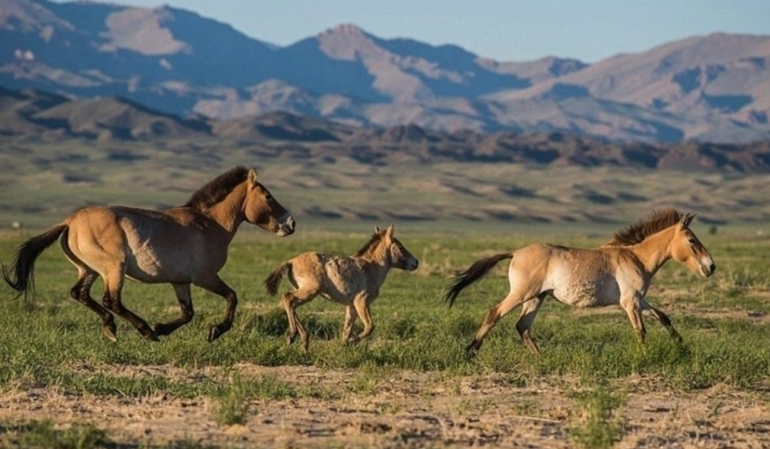Hustai National Park

Hustai National Park
Hustai National Park is a protected area in central Mongolia renowned for its successful reintroduction of the Przewalski horse (takhi Mongolian name) and it’s diverse.
• Location: Hustai National Park is located approximately 100 kilometers
(62 miles) west of Ulaanbaatar, the capital city of Mongolia.
• Establishment: The Park was established in 1993 and is managed by the Hustai National Park Trust, a non-governmental organization dedicated to conservation efforts.
The wild horse has long been known to the nomadic peoples of the steppes, but it was first scientifically described in 1881 by the Russian explorer and naturalist Nikolai Przhewalski, after whom the species is named. By the mid-20th century, the takhi horse faced severe population declines due to habitat loss, competition with livestock, hunting, and harsh climate conditions. The last confirmed sighting of a wild horse was in 1969 in the Gobi Desert, and the species was declared extinct in the wild. In the 1990s, successful breeding programs led to efforts to reintroduce wild horses back into their native habitats. One of the most significant reintroduction projects took place in Hustai National Park in Mongolia. Thanks to these reintroduction efforts, there are now several hundred takhi wild horses roaming in the wild, primarily in Mongolia.
These populations are monitored to ensure their continued growth and genetic diversity. Takhi horses are distinct from domestic horses with stockier bodies, shorter legs, a thick neck, and a distinctively upright mane without a forelock. They have a dun color with a pale belly and dark, zebra-like stripes on their legs.
Hustai National Park is a prime example of successful wildlife conservation and offers a unique combination of natural beauty, wildlife diversity, and cultural heritage. It is a must-visit destination for those interested in nature and conservation.

